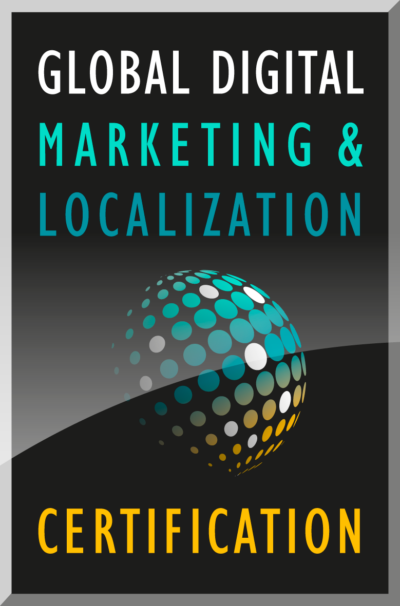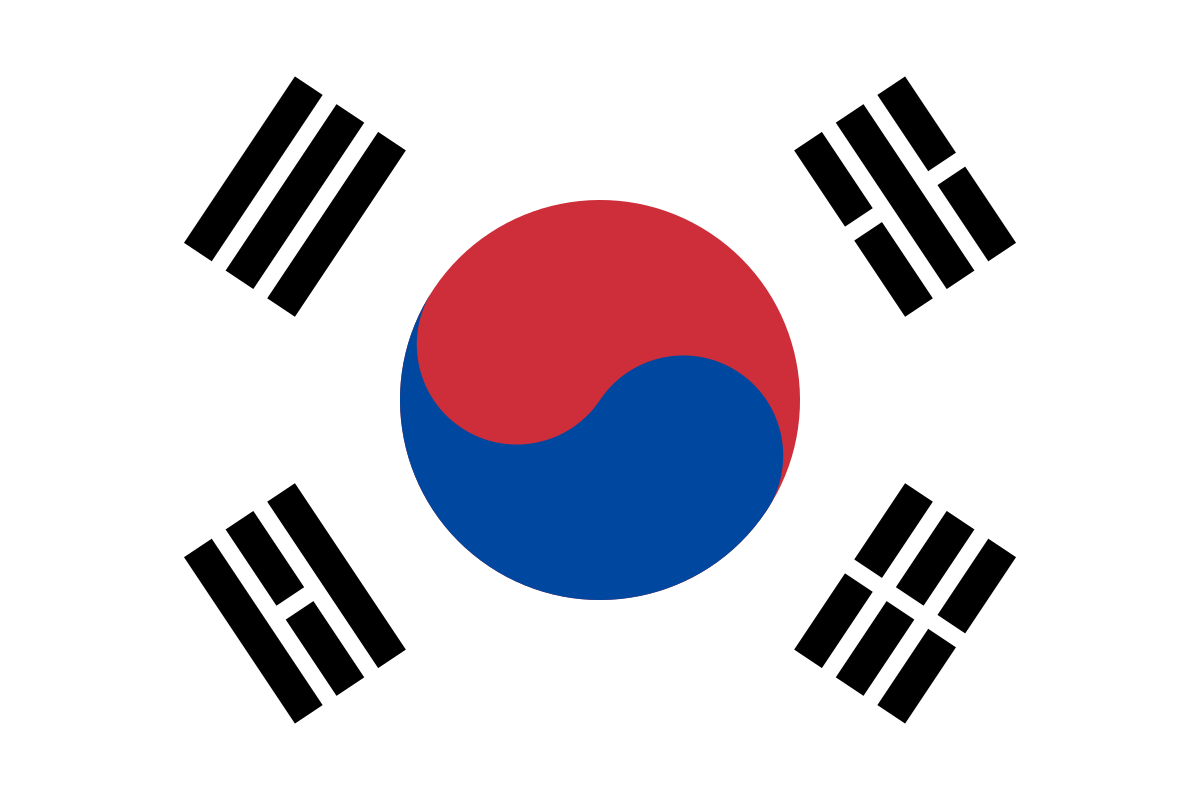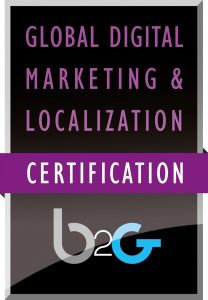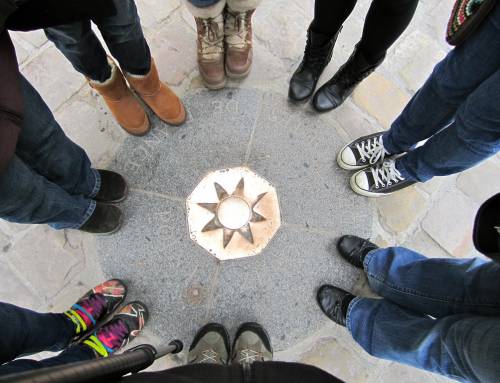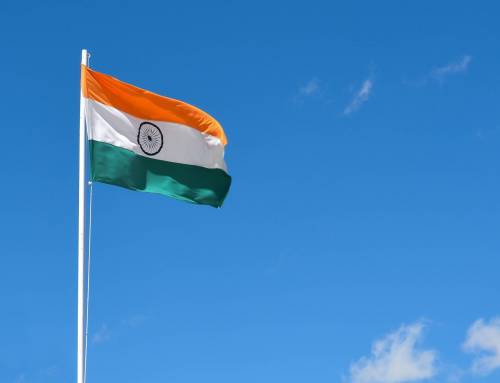This is a paper presented by Seoha Lee, a recent graduate of both the Global Digital Marketing and Localization Certification (GDMLC) program. This paper presents the work being produced by students of The Localization Institute’s Global Digital Marketing and Localization program. The contents of this paper are presented to create discussion in the global marketing industry on this topic; the contents of this paper are not to be considered an adopted standard of any kind. This does not represent the official position of the Brand2Global Conference, The Localization Institute, or the author’s organization.
Introduction
South Korea is a very unique market in a sense that it has its own way of things. The country has kept its own culture and history for thousands of years and its people use Korean that no other country uses. This makes it extremely hard to enter or win the market. The most popular search engine (Naver), chat app (Kakao Talk), smart phone (Samsung Galaxy) are all developed and owned by South Korean companies. Huge multinational enterprises only rank at the bottom at market share, and sometimes they are withdrawn from the market without any faces. Wal-Mart, Uber, Nokia, Carrefour, Yahoo, etc., have not shown enough attraction to satisfy Korean customers mainly because they didn’t understand the customers and failed to break through the solid brand loyalty that local brands have built in the market.
Korean customers are also very unique. If a product or service has a good value for money or has a unique merit, without being able to speak a word in English, they will go to any website around the world and place an order. They will apply all sorts of coupons and use shipping agencies to get good things for a small price. At the same time, they are emotional and decisive. The trade dispute with Japan in July 2019 made the entire Korean people join the boycott movement. It reduced the sales of Japanese beer by 97%, Japanese cars by 57%[1], and travel to Japan 60%[2] that year, and is still ongoing for more than a year.
Despite of these challenging market and customers, many multinational companies try to enter the Korean market because there are passionate and lucrative consumers. Jim Sinegal, the former CEO of Costco once said in the interview with Seattle Times that Costco’s highest volume store was South Korea, and that he starts to “tear up just thinking about it”[3]. The sales of luxury brands are huge[4] and the box office revenue is the third largest in the world[5]. And thanks to Han-Ryu and K-pop, success in the Korean market is likely to spread to the Asian market. Thick middle-class consumers are always waiting for good stuffs. When something is said to be good on social media, 50 million people in this small country share the news with each other and are passionate to try one. I will use Hofstede’s four Cultural Dimensions to analyze Korean customers and give some insights to successfully enter the Korean market.
Dimension 1: Individualism-Collectivism
According to the Hofstede’s Cultural Dimensions analysis, Korea scored a very low score of 18 in Individualism-collectivism dimension. It means that South Korea is a very collectivist society. This appears to be due to the deep-rooted Confucianism culture. The most important idea of Confucianism is the 인(benevolence, 仁), which means that one should maintain the family order, think of our neighbors and be loyal to the country. As a descendant of the nation that had embraced the idea of Confucianism for 519 years (Joseon), the collectivism of Confucianism still dominates the Korean mind to some extent.
Koreans don’t say the words like “my family”, “my school”, “my company”. They are “our family”, “our school”, “our company”. This collectivism is related to ‘냄비 근성 (pot tendency)’ and ‘눈치 (sensing or quick-witted)’ culture, which are very popular concepts to describe the nature of Korean people. Pot tendency is a mockery Korean people use to describe how they quickly and passionately follow a fashion or respond to a circumstance like a pot on fire, then get cold when they are not interested anymore. Sensing culture is to care more about the eyes of others than one’s own subjects in deciding or acting on things.
With these tendencies combined together, Koreans run after fashion collectively. If something is popular, they try to buy it as a test, and in the case the products are proven to be popular and valuable, almost all people buy it. These situations are called ‘fever’. The 2014 Honey Butter Chips fever caused the production delay and national sellout. More than 300 stores opened across the country when there were Taiwanese Castella fever in 2016, then almost every store closed after a TV show threw a doubt that they are using cooking oil instead of butter. On the other hand, long padding (padded long down coat) fever in 2017 became so popular that a survey showed that 50% of people in their 10s and 20s made purchases that year[6], and it remained as a steady seller due to its exceptional warmth.
Dimension 2: Uncertainty Avoidance
Another thing that can be seen in these instances is Korea’s high uncertainty avoidance. South Korea scored 85 in the uncertainty avoidance index. This is among the highest level in the world. The most important thing in the Koreans’ consumption decision-making process is the ‘opinions of others’ such as word-of-mouth, reviews, recommendations and ratings. If there is a Korean who would like to buy a timber desk, she will see its design and affordability of course. In addition, she will ask these questions: What do others say about their experiences using it? If there are defects, is it easy to return or exchange? Does it smell good? How many years does its warranty last? And no matter how much she likes the design, if she doesn’t get satisfactory answers to the questions that follow, she will rather pay more and buy something better.
In consequence, customer services, especially helpline service by phone, food safety, and refund policies are very important in Korea. As can be seen from the Taiwanese Castella fever, hundreds of chains have completely collapsed in one broadcast that raised the issue of food safety. Everything in Korea must be done quickly and with certainty, from manufacturing, purchasing procedures, enquiry procedures, shipping, returns and refunds, to after-sales services. Many people buy products from domestic brands because they operate many local service centers and are more hospitable to their various service needs.
Dimension 3: Power Distance
South Korea’s Power Distance Index score is 60, which is above average. To some extent, Koreans believe that everyone has its place in the world and respect the words of older or higher-ranking people and policies of the government. It also appears to be due to the ideas of ‘효 (filial duty)’ and ‘충 (loyalty)’ from the centralized bureaucratic society of the Joseon era. So unlike American commercials that show products and focus on product introduction, Korean TV commercials mostly feature celebrities, unless there are some special cases, and parody of popular TV dramas, movies, and TV shows at the time to lend their influence. Accessories or clothing that famous celebrities or influencers wore on TV shows or posted on Instagram often go out of stock right away. A word from the government or the president also has a big impact on the minds of Koreans. As can be seen in the COVID-19 crisis, South Korean people have followed government recommendations and appeals relatively well. They follow the government if there are good reasons and fear the possibility of harming other people by spreading virus.
On the one hand, however, when the authorities fail to play their part or set a moral example, Koreans would definitely protest. The democratic movements and massive protests during the dictatorship from the 1960s to 1980s, the recent presidential impeachment, the expulsion of numerous celebrities who fell into gambling, drugs or drunken driving, and the Steve Yoo case who has been restricted to enter the country after he didn’t join the military service 20 years ago are a few of the examples. It would be probably because of this that Korea did not get a greater score in the Power Distance Index.
Dimension 4: Masculinity and Femininity
Anyone who knows Korea more than a little will wonder why Korea scored low in masculinity. Korea scored 39 and classified as a feminine society, while Japan scored 95 and China scored 66. In Quora, the question of why Korea is classified as feminine society in spite of the extreme competition and discrimination between men and women has been uploaded and stimulated discussions[7]. While it may be difficult to understand the result, and it is true that Korea is a very competitive and sexist society, it brings a deeper understanding of Korean society.
In the past, Korea was certainly a masculine society, but much has changed. In about 15 years, South Korea has undergone radical policy changes, including 5 working days a week, 52 work hours a week or less, and abolition of the patriarchal family owner law and the criminality of abortion. It’s been about 15 years since the word “wellness” first appeared, shocked the society, became trend, and was established as the natural way of life. While Koreans still compete for jobs and promotions and are crazy about stocks and real estate, many Koreans’ dreams are not to show their abilities and live a successful and wealthy life, but to live in harmony with their families, without worrying about money or lagging behind others, and being more filial to their parents. So hundreds of thousands of Korean young people hang for years on national examinations to select government officials for taking a stable job. Koreans don’t throw fire bottles or break shops when they protest. They don’t smash or burn products when they are participating in boycotts. They just don’t buy resolutely. They don’t like splashy or bold designs, and prefer subtle and simple designs that blend well with others and other items.
Conclusion
There are so many examples of not understanding the Korean market and having to step away from it. Uber withdrew from the business with Seoul’s Uber-paparazzi policy after going through conflicts with the taxi union[8], and Wal-Mart and Carrefour failed to satisfy customers’ tastes and offended Korean sentiments of ‘family-like companies’ by poor treatment of employees, and had to pulled out of the market. On the other hand, Costco has been very successful in Korea with a 100% refund policy, full-time employment reaching 98%, and the supply of affordable and quality products. The sales volume of the Costco store in Yangjae, Seoul is number one in the world[9]. The first Ikea store in Korea (Gwangmyeong store) logged 303 million dollars in 2016, which was the largest turnover among all Ikea stores in the world[10]. Unique products with good prices, full localization, satisfactory customer service are told to be the reasons of success. Korean consumers are very assertive when they feel offended, but very passionate about goods and services tailored to satisfy their needs and emotions. I hope many companies understand the attractiveness of the Korean market and the nature of Korean customers, and successfully launch their business in South Korea.
Author Bio:

Seoha Lee is a Korean localization and digital marketing professional. Worked as an editor, digital marketer, communication specialist for more than eight years in local publishing industry, a global luxury fashion e-commerce company and an international volunteer organization. Specialized in introducing foreign contents, brands and products to Korean audience.
Connect with Seoha:
I started this omnidirectional course in the hope of polishing my skills in localization and digital marketing, and it provided me more than I expected. I want to especially thank Dr. Singh for the practical content, substantial resources, and insightful interviews with various industry professionals.
References:
[1] Justin McCurry (2019, September 4) South Korean boycott of Japanese goods hits beer and carmakers. Retrieved from https://www.theguardian.com/world/2019/sep/04/south-korea-boycott-japanese-goods-beer-car-sales
[2] colin@yna.co.kr (2019, October 3) S. Koreans’ expenditures in Japan down 60 pct in Aug. amid boycott. Retrieved from https://en.yna.co.kr/view/AEN20191003001700320
[3] Melissa Allison (2011, December 17) Retiring CEO of Costco takes a look back on his legacy. Retrieved from https://www.seattletimes.com/business/retiring-ceo-of-costco-takes-a-look-back-on-his-legacy/
[4] The AsiaN Editor (2019, November 20) Luxury fashion powerhouses rush into South Korean market. Retrieved from http://www.theasian.asia/archives/107047
[5] Motion Picture Association of America (retrieved 2020, September 30) THEME Report 2019. https://www.motionpictures.org/wp-content/uploads/2020/03/MPA-THEME-2019.pdf
[6] humane@yna.co.kr (2017, December 6) ‘롱패딩 열풍’… 10·20대 67% “갖고 있거나 곧 구입”. Retrieved from https://www.yna.co.kr/view/AKR20171206042200003
[7] Why is South Korea considered a feminine society?. https://www.quora.com/Why-is-South-Korea-considered-a-feminine-society
[8] Joon Young Kwon (2019, September 4) Why Uber is having a hard time in Korea. Retrieved from https://asiatimes.com/2019/09/why-uber-is-having-a-hard-time-in-korea/
[9] Don Shapiro (2018, September 20) Costco’s Taiwan Success Story. Retrieved from https://topics.amcham.com.tw/2018/09/costcos-taiwan-success-story/
[10] Yonhap News Agency (2017, June 21) IKEA Korea chief ‘absolutely satisfied’ with performance. Retrieved from https://retailinasia.com/in-trends/ikea-korea-chief-absolutely-satisfied-with-performance/
Disclaimer



